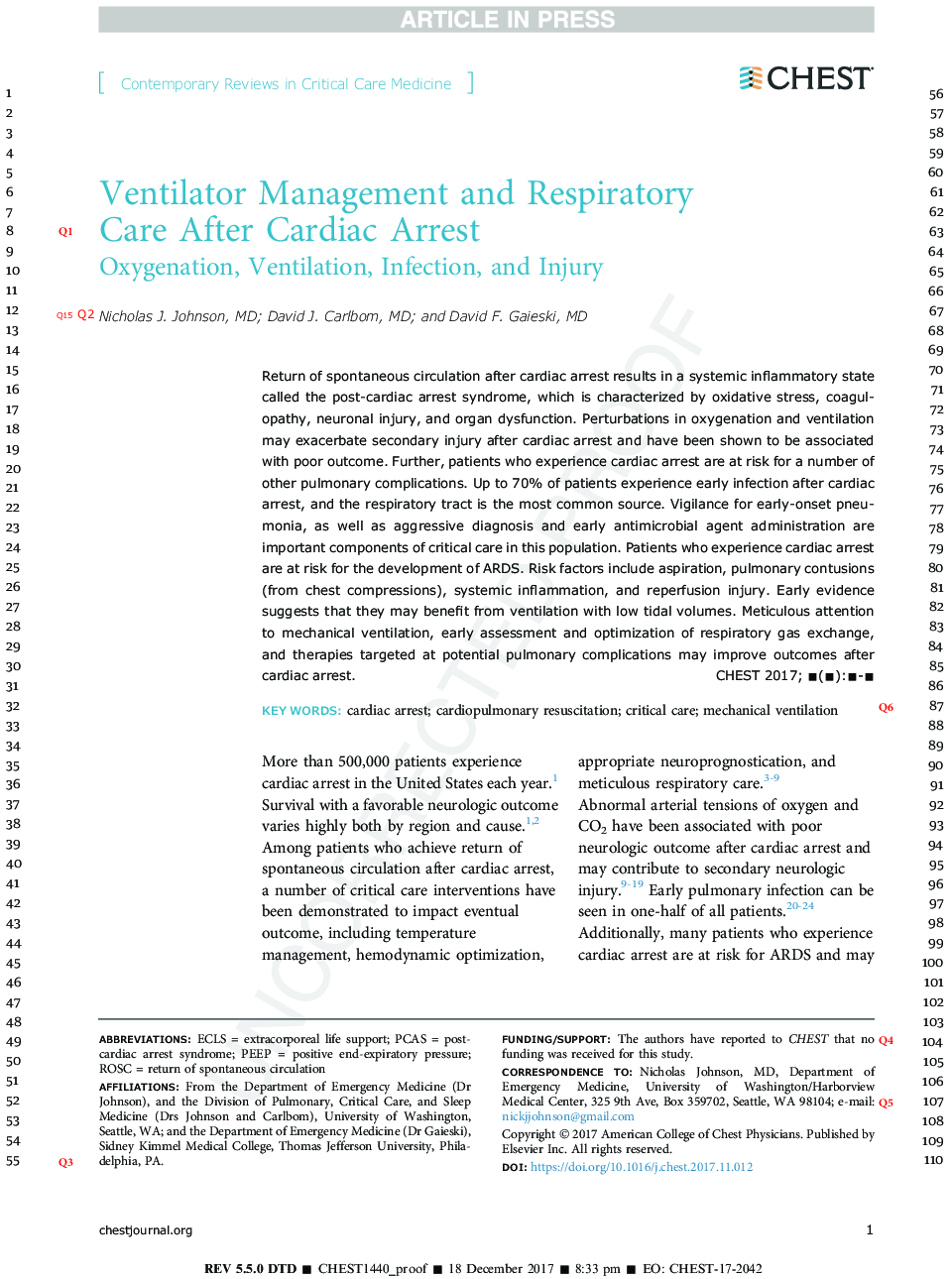| کد مقاله | کد نشریه | سال انتشار | مقاله انگلیسی | نسخه تمام متن |
|---|---|---|---|---|
| 8657835 | 1574856 | 2018 | 12 صفحه PDF | دانلود رایگان |
عنوان انگلیسی مقاله ISI
Ventilator Management and Respiratory Care After Cardiac Arrest
ترجمه فارسی عنوان
مدیریت تهویه و مراقبت های تنفسی بعد از دستگیری قلبی
دانلود مقاله + سفارش ترجمه
دانلود مقاله ISI انگلیسی
رایگان برای ایرانیان
کلمات کلیدی
PEEPROSCECLSPCASCardiopulmonary resuscitation - احیا قلب و عروقCardiac arrest - ایست قلبی یا آرست قلبReturn of spontaneous circulation - بازگشت گردش خون خود به خودیMechanical ventilation - تهویه مکانیکیExtracorporeal life support - حمایت از زندگی غیرمعمولPost-cardiac arrest syndrome - سندرم متوقف شدن پس از قلبPositive end-expiratory pressure - فشار مثبت در انتهای بیحسیCritical care - مراقبتهـای ویـژه
موضوعات مرتبط
علوم پزشکی و سلامت
پزشکی و دندانپزشکی
کاردیولوژی و پزشکی قلب و عروق
چکیده انگلیسی
Return of spontaneous circulation after cardiac arrest results in a systemic inflammatory state called the post-cardiac arrest syndrome, which is characterized by oxidative stress, coagulopathy, neuronal injury, and organ dysfunction. Perturbations in oxygenation and ventilation may exacerbate secondary injury after cardiac arrest and have been shown to be associated with poor outcome. Further, patients who experience cardiac arrest are at risk for a number of other pulmonary complications. Up to 70% of patients experience early infection after cardiac arrest, and the respiratory tract is the most common source. Vigilance for early-onset pneumonia, as well as aggressive diagnosis and early antimicrobial agent administration are important components of critical care in this population. Patients who experience cardiac arrest are at risk for the development of ARDS. Risk factors include aspiration, pulmonary contusions (from chest compressions), systemic inflammation, and reperfusion injury. Early evidence suggests that they may benefit from ventilation with low tidal volumes. Meticulous attention to mechanical ventilation, early assessment and optimization of respiratory gas exchange, and therapies targeted at potential pulmonary complications may improve outcomes after cardiac arrest.
ناشر
Database: Elsevier - ScienceDirect (ساینس دایرکت)
Journal: Chest - Volume 153, Issue 6, June 2018, Pages 1466-1477
Journal: Chest - Volume 153, Issue 6, June 2018, Pages 1466-1477
نویسندگان
Nicholas J. MD, David J. MD, David F. MD,
